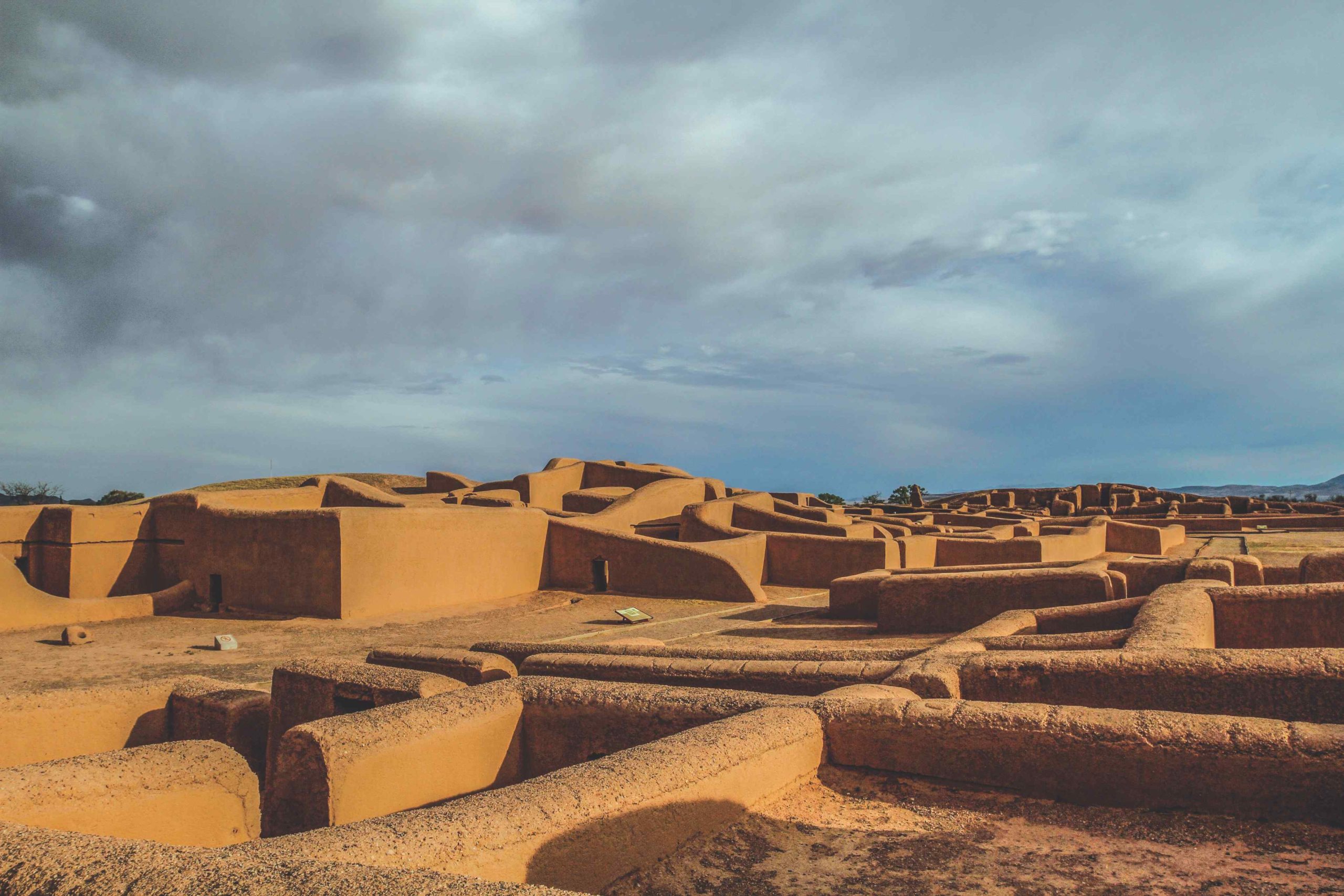
Paquimé, also known as Casas Grandes, is an ancient archaeological site located in northwestern Mexico. This fascinating landmark is shrouded in mystery and offers a glimpse into the rich history and culture of the region. From its impressive adobe architecture to its intricate pottery and complex trading system, Paquimé has captivated researchers and visitors alike.
In this article, we will uncover 15 surprising facts about Paquimé, shedding light on its significance and highlighting its unique features. Whether you are a history enthusiast, an archaeology buff, or simply curious about the ancient civilizations of North America, you are in for a treat as we delve into the secrets of this remarkable UNESCO World Heritage Site.
Key Takeaways:
- Paquimé, Casas Grandes was a thriving trading hub with advanced architecture and a mysterious disappearance, leaving researchers intrigued and seeking answers.
- The pottery tradition, astronomical alignments, and UNESCO World Heritage Site designation highlight the cultural significance of Paquimé, Casas Grandes, and its influence on the Southwest United States.
The Origin of Paquimé, Casas Grandes
Paquimé, also known as Casas Grandes, is an archaeological site located in the state of Chihuahua, Mexico. It was inhabited by the Mogollon culture between the 11th and 14th centuries AD. The site is known for its remarkable architectural structures and intricate pottery.
The Mysterious Name
The name “Casas Grandes” means “Great Houses” in Spanish, which refers to the large multi-story buildings found at the site. The ancient name of the settlement is still unknown, adding to the mystery surrounding this fascinating civilization.
An Advanced Trading Hub
Paquimé was a major trading center, connecting different indigenous cultures across North America. Its strategic location allowed it to thrive as a hub for the exchange of goods, such as pottery, turquoise, seashells, and macaw feathers.
The Elaborate Architecture
The architecture at Paquimé is unique and showcases the advanced engineering skills of its inhabitants. The buildings were made of adobe and featured multiple rooms, interconnected passageways, and intricate decorations.
The Famous T-shaped Doorways
One distinctive feature of the buildings at Paquimé is the T-shaped doorways. These doorways are believed to have had ceremonial significance, representing the connection between the spiritual and earthly realms.
Astronomical Alignments
Researchers have discovered that some of the buildings at Paquimé are aligned with astronomical events. Certain structures are oriented to mark the solstices and equinoxes, highlighting the importance of astronomy in the daily lives of its inhabitants.
The Mysterious Disappearance
Like many ancient civilizations, the exact reasons for the decline and abandonment of Paquimé remain a mystery. Some theories suggest environmental changes, conflict, or socio-political factors played a role in its decline.
An Extraordinary Pottery Tradition
The pottery produced by the people of Paquimé is renowned for its intricate designs and exquisite craftsmanship. The pottery often features geometric patterns, zoomorphic motifs, and carved details, reflecting the creativity and skill of the artisans.
The Famed Paquimé Polychromes
The Paquimé Polychromes are highly regarded ceramic vessels known for their vibrant colors and intricate painting techniques. These polychrome vessels have provided valuable insights into the daily life, rituals, and beliefs of the Mogollon culture.
A UNESCO World Heritage Site
In 1998, Paquimé was recognized as a UNESCO World Heritage Site. This prestigious designation highlights the importance of preserving and studying the cultural heritage of Casas Grandes and its significance to humanity.
The Connection to the Southwest United States
Paquimé’s influence extended beyond its borders, particularly to the ancestral Puebloan cultures in the Southwest United States. The exchange of ideas, technologies, and artistic styles between these regions contributed to the cultural diversity of both areas.
The Enigmatic Paquimé Killings
Archaeological excavations at Paquimé have revealed evidence of violent deaths, including a mass burial site containing the remains of several individuals. The reasons behind these killings remain unclear, leaving researchers intrigued and seeking answers.
An Intricate Water Management System
Despite being located in a semi-arid region, Paquimé had a sophisticated water management system. The people developed canals, reservoirs, and stone pools to store and distribute water, showcasing their ingenuity in adapting to their environment.
The Symbolic Importance of Macaws
Macaws were highly valued by the inhabitants of Paquimé. These colorful birds were seen as symbols of fertility and power, and their feathers were used in rituals and ceremonies. The presence of macaws at the site suggests connections with tropical regions.
The Preservation Efforts
Today, efforts are being made to protect and preserve the cultural heritage of Paquimé, Casas Grandes. Collaborations between local communities, researchers, and governmental organizations aim to ensure the site’s conservation and raise awareness about its historical significance.
Conclusion
Paquimé, also known as Casas Grandes, is a remarkable archaeological site with a rich history and culture. From its advanced architectural features to its intricate pottery and artwork, Paquimé offers a unique glimpse into the past. The site’s strategic location along ancient trade routes connected various civilizations and influenced its development as a thriving city.
Exploring Paquimé allows us to appreciate the ingenuity and craftsmanship of its inhabitants, who created a complex society in the arid environment of northwest Mexico. The preservation of the site and ongoing archaeological research continue to reveal fascinating discoveries and insights into the lives of the people who once called Paquimé home.
With its fascinating history and impressive archaeological remains, Paquimé, Casas Grandes, is undoubtedly worth a visit for history enthusiasts and those interested in ancient civilizations. Discovering the secrets of this remarkable site is a captivating journey into the past, offering a unique perspective on the diverse cultures that shaped the region.
FAQs
1. What is the significance of Paquimé, Casas Grandes?
Paquimé, Casas Grandes, is an important archaeological site that showcases the advanced architectural features, intricate pottery, and artwork of the ancient civilization that thrived there. It provides valuable insights into the cultural and economic exchange that took place along ancient trade routes.
2. How old is Paquimé?
Paquimé dates back to around 900-1400 CE, during the time of the Mogollon culture. It flourished as a major city and trading hub during this period.
3. Can I visit Paquimé?
Yes, Paquimé is open to visitors. You can explore the various archaeological structures, including the adobe buildings, ceremonial platforms, and the Casa Grande. Guided tours and informative exhibitions are available to enhance your understanding of the site.
4. What can I expect to see at Paquimé?
At Paquimé, you can expect to see well-preserved adobe buildings, including multi-story structures and intricate ceramic art. The site also features a reconstructed ballcourt and a museum that houses artifacts and exhibits related to the ancient civilization.
5. Are there any accommodations near Paquimé?
There are various accommodations available near Paquimé, ranging from hotels to bed and breakfast establishments. The nearby city of Casas Grandes offers lodging options for visitors.
Uncover more captivating insights about Paquimé's rich history, explore the grandeur of Fatehpur Sikri's UNESCO-recognized wonders, and dive into Casa Grande's fascinating past. Paquimé's secrets await your discovery, while Fatehpur Sikri's astonishing facts will leave you in awe. Journey through time as you unravel the intriguing tales of historic events and moments in Casa Grande, Arizona. Embark on a thrilling adventure through these ancient cities, each with its own unique story to tell.
Was this page helpful?
Our commitment to delivering trustworthy and engaging content is at the heart of what we do. Each fact on our site is contributed by real users like you, bringing a wealth of diverse insights and information. To ensure the highest standards of accuracy and reliability, our dedicated editors meticulously review each submission. This process guarantees that the facts we share are not only fascinating but also credible. Trust in our commitment to quality and authenticity as you explore and learn with us.


